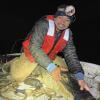Recently, I started volunteering for Sloth Conservation Foundation and learned that it is extremely difficult to find sloths in the canopy because:
1) they hardly move,
2) sit high up in the canopy ( not always ) and
3) their fur is quite resistant to infra red ( although not completely )
Camera traps are not really a solutions because they are difficult to position in the canopy, and because of 1) they are not likely to catch a sloth.
I suggested a lot of flying around with drones, taking lots of pictures, manually identify sloths, then train an AI and once trained do more flying around and let the AI do the work.
This apparently is difficult because flying a drone into a canopy is risky for the drone ( I don't know about the wildlife )
Flying above the canopy can be done, but just a singly leaf layer already prevents the infra red from penetrating.
Here come the questions:
- does anybody have different experiences with flying drones into the canopy?
- does anybody have different experiences with finding sloths via camtraps?
- any other ideas for technology-enhanced spotting of sloths?
If not, would it not be time for tree-climbing droids? Perhaps also for other canopy research.
PS 1 ) The relevance of all this is that currently, sloths are not considered an endangered species, and perhaps they are not. But if they are so difficult to spot, how can we know their occurrence?
PS 2 ) Dogs can be trained to find scat from sloths, but I would not call that technology.
28 July 2023 4:18pm
Hi,
I work in Panama on an arboreal camera trap project. We did pick up sloths on camera traps. I think its not so much that camera traps find it hard to detect sloths as that camera traps in trees target a very small area and a sloth just may not go that route. I believe that arboreal camera traps could still net you great results, its just a matter of fine tuning your placement, choosing the right tree in the right season, targeting the right branches etc)
We also spent over 100 hours carrying out nocturnal observations from a fixed platform ( a hunters chair strapped at about 10 meters up a tree) We used a thermal imaging monocular to detect the presence of animals and then a set of night vision binoculars to verify the species. Although sloths were not the target we actually had the pleasure of watching quite a few during the season. I would highly recommend the use of thermal and night vision for carrying out good old fashioned observations.
11 August 2023 12:37pm
Can you developan eDNA test for sloths? Sample preparation techniques have evolved so that soil and leaf litter samples (or even swabs of tree surfaces) can be tested for the presence of Sloth DNA. Once you identify the trees they are in, you can conduct more intensive searches. Sniffer dogs can be remarkably effective, even if they don't count as tech. Use the dogs to indicate target trees/areas, use the eDNA testing to identify more precise locations, then conduct your canopy search.
DNA testing equipment has come down in price and improved to the point that you can get a DNA profile from a desktop profiler that costs a few thousand dollars. We're hoping to use some of this tech in a project soon, just waiting on a reply from the funding body we applied to.
17 January 2024 6:15pm
We had similar problem when use drone to survey crocodiles. Our crocodiles in Indonesia live in the waterbodies that usually have dense canopy, and their shyness to emerge to surface also not helping.
We haven't try any of this, but some suggest use thermal or multispectral drone. It was tested on the less shy species and more open water, and it works. It shows the heat signature of the cros and their trail. For multispectral it may also shown distinct signature from bands combination. It appears this also already works for OrangUtan nest survey (they have nest around top canopy) and bird survey. Might work with Sloth maybe? as long as they are around top of canopy? And since they slow, that means they won't escape fast if you lower your altitude for more resolution?
There is also a suggestion using LiDAR drone, but it's way too expensive for us. LiDAR can penetrate the canopy so, you might be able to capture sloth.
Best,
Dhanu
17 January 2024 9:21pm
Hey Frank!
I don't know the hypothetical cost of something like this, but ever since I saw this article a couple years back I've always thought it would be interesting to make something similar for identify wildlife under canopy.
https://research.gatech.edu/slothbot-garden-demonstrates-hyper-efficient-conservation-robot
Interestingly, it's named the sloth bot.
But the idea I that I had envisioned was creating something similar where you have a few different thermal cameras in a box point in each direction, and have it slowly travel along a really long cable fixed to 2 different trees. Add a solar panel to increase battery life, maybe store videos on board or satellite transmit, etc. Then run those videos through trained AI after they are transmitted or collected. With the correct settings, it shouldn't draw much power at all.
This way you have video being taken under the canopy with thermal cameras traveling through long stretches of the forest. With cameras facing in all directions on the box, you wouldn't have to worry about camera placement as much like with regular camera traps. Nor do you have to worry as much about the location you placed it. Set it to move an extremely slow speed and you should capture sloths visible in any direction of the moving camera box (as well as any other wildlife you can train the AI to detect).
Couple of these stretched out in a few different locations in the forest could make for some interesting results.
Just thought I've been playing around with in my head for a little while!
Best,
Travis



















Lucy